Japan, a land of captivating contrasts, beckons travelers with its unique blend of ancient traditions and ultramodern marvels. While the iconic cities of Tokyo and Kyoto are often cornerstones of a first-time visit, Japan’s true depth lies in exploring its diverse regions. For those seeking to enrich their itineraries and venture beyond the well-trodden paths, a wealth of extraordinary destinations awaits.
Many travelers planning a week or two in Japan naturally gravitate towards Tokyo and Kyoto. These cities are undeniably essential, offering a glimpse into Japan’s vibrant culture and rich history. However, limiting your journey to just these two urban centers means missing out on the breathtaking landscapes, unique regional cultures, and authentic experiences that Japan has to offer. As a seasoned traveler in Japan, I often encounter the question: “Where else should I visit besides Tokyo and Kyoto?” It’s a question that deserves more than a simple answer, as the possibilities are as varied and enchanting as Japan itself.
Often, travelers are looking to add a touch of the unexpected, a taste of the off-the-beaten-path to their Japanese adventure. The challenge is to provide recommendations that are not only compelling but also practical, especially for those with limited time. This guide aims to address that challenge, offering a curated selection of destinations easily accessible from Kyoto and Tokyo, perfect for enriching your Japan travel experience.
This isn’t about dismissing the allure of Tokyo or Kyoto. They remain indispensable parts of any Japan itinerary, especially for first-time visitors. Instead, this is about expanding horizons, revealing the hidden gems and diverse landscapes that make Japan such a rewarding destination to explore. Think of it as adding layers to your Japanese tapestry, weaving in experiences that will resonate long after you’ve returned home.
 Red temple reflecting on a water in Uji
Red temple reflecting on a water in Uji
Byodo-in Temple, a UNESCO World Heritage site in Uji, near Kyoto, reflecting on a pond. This serene location offers a glimpse into Japan’s rich cultural heritage and is a beautiful example of Buddhist temple architecture.
Before diving into specific destinations, let’s briefly address the essential question: Should Tokyo and Kyoto be part of every Japan itinerary?
The Indispensable Duo: Kyoto and Tokyo
For first-time visitors, the answer is a resounding yes. Kyoto and Tokyo offer contrasting yet complementary experiences that are fundamental to understanding Japan.
Kyoto: A Journey into Japan’s Heart and Soul
Kyoto is more than just a city; it’s a living museum of Japan’s imperial history and traditional culture. As the former imperial capital for over a millennium, Kyoto is unparalleled in its concentration of historical sites, traditional arts, and refined aesthetics. To suggest skipping Kyoto on a first trip to Japan would be a disservice to any traveler seeking to understand the country’s cultural roots.
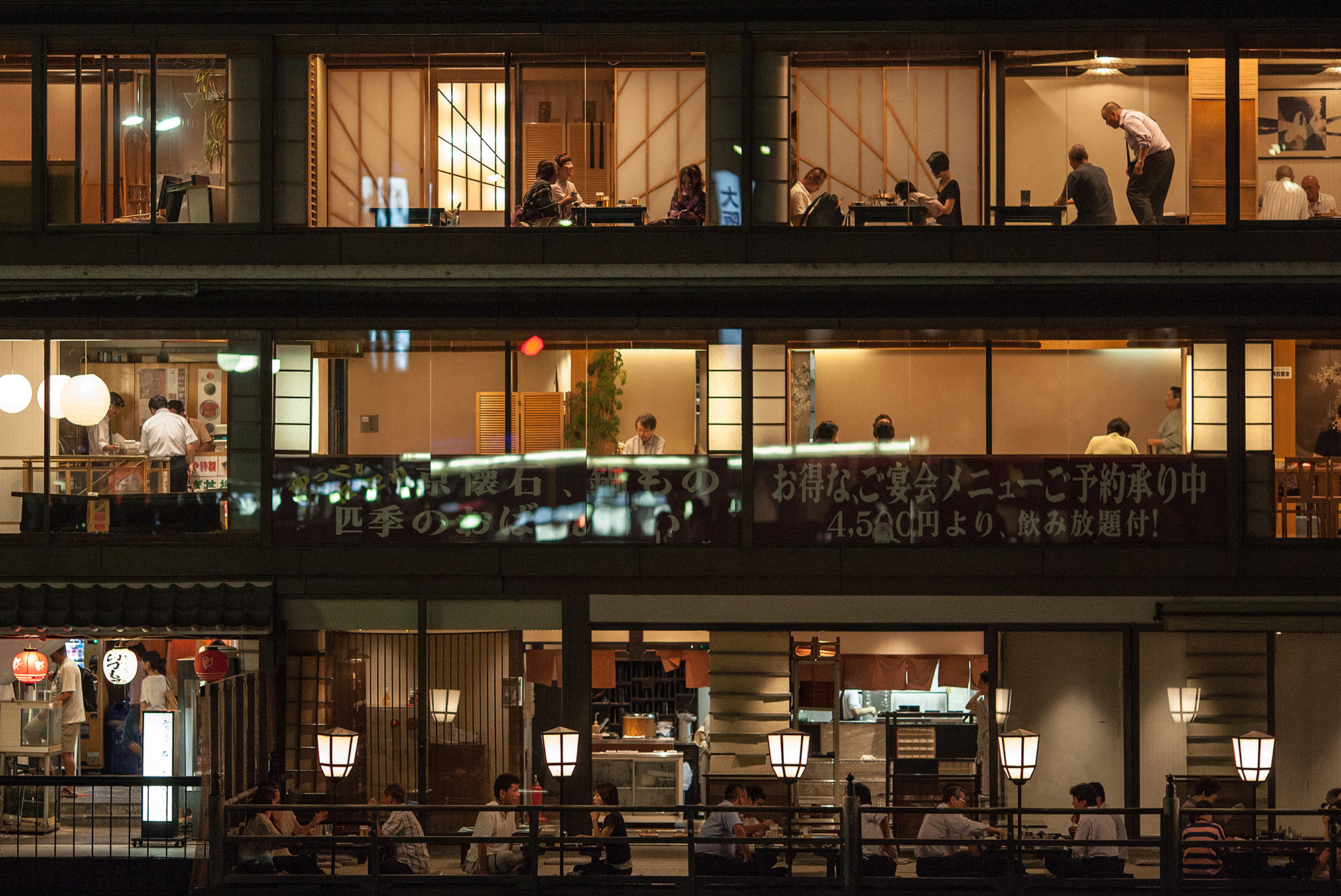 Kyoto – Pontochio Dining
Kyoto – Pontochio Dining
Night view of Pontocho alley in Kyoto, a narrow street lined with restaurants and bars along the Kamogawa River. Experiencing Kyoto’s nightlife in such atmospheric settings is a must for visitors.
Kyoto is a “classic destination” for good reason. Its temples, gardens, geisha districts, and traditional wooden machiya houses transport you back in time, offering a tangible connection to Japan’s past. Visiting Kyoto first provides an invaluable context for appreciating other destinations in Japan, allowing you to see how different regions have been influenced by and diverged from the cultural center.
Allocate at least three to four full days to explore Kyoto’s highlights. Must-see landmarks include Kinkaku-ji (Golden Pavilion), Fushimi Inari Shrine with its thousands of red torii gates, Kiyomizu-dera Temple, and Arashiyama Bamboo Grove. Beyond the iconic sights, allow time to wander through Gion, Kyoto’s geisha district, or Nishiki Market, “Kyoto’s Kitchen,” to soak in the city’s atmosphere and discover hidden gems. For a truly immersive experience, consider extending your stay to explore the Kyoto Trail, a network of hiking paths around the city, or visit during the spectacular autumn foliage season for breathtaking scenery.
Tokyo: Embracing the Metropolis
Tokyo, the dynamic capital of modern Japan, presents a stark contrast to Kyoto’s traditional charm. As one of the world’s largest and most vibrant metropolises, Tokyo is a sensory feast, a city that constantly reinvents itself while retaining its unique Japanese identity. While it might not possess the same concentration of ancient temples as Kyoto, Tokyo offers a different kind of cultural richness, one that is rooted in its contemporary urban landscape and cutting-edge trends.
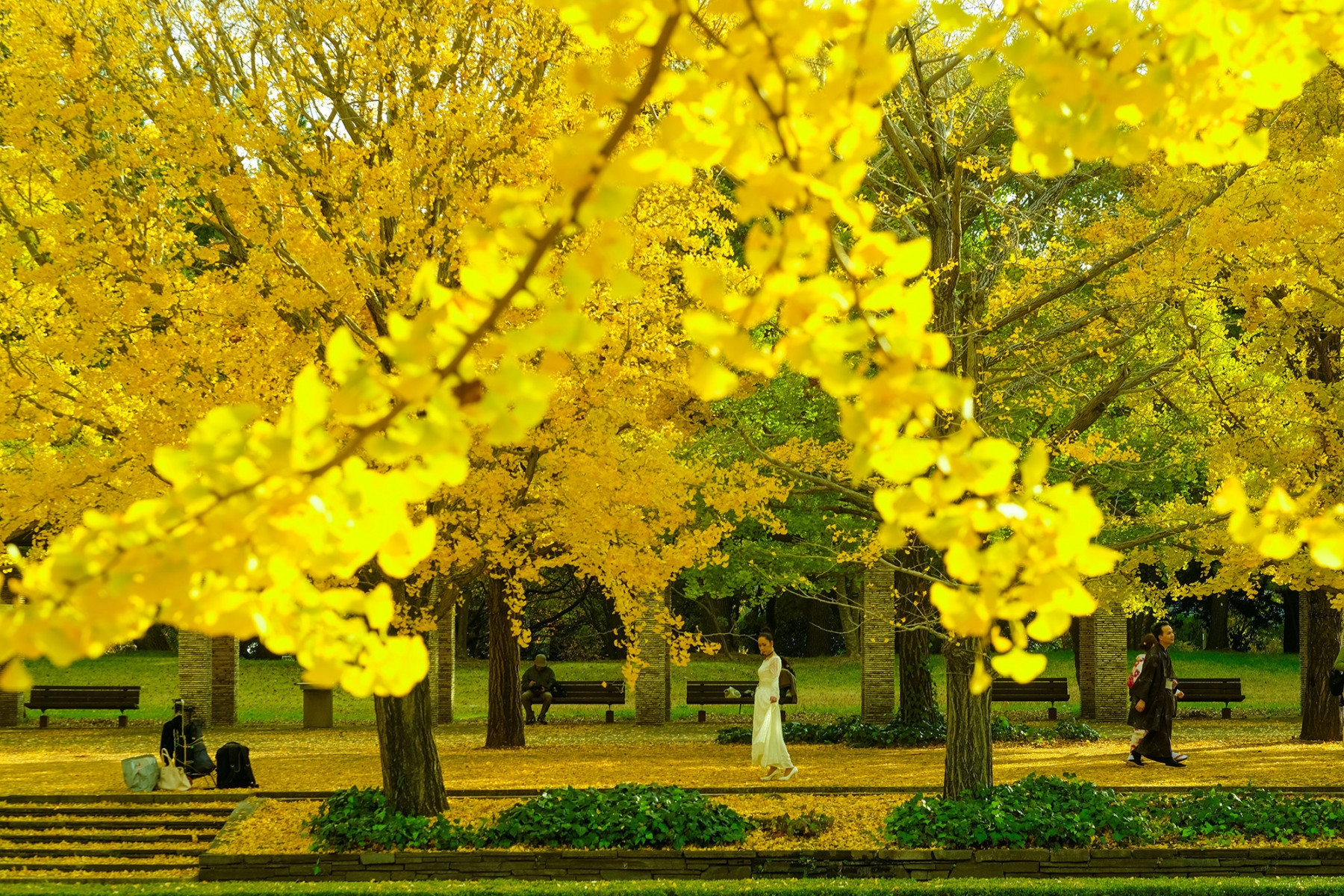 Lady walking in the middle of ginko trees in Tokyo Japan
Lady walking in the middle of ginko trees in Tokyo Japan
A woman walks through a park filled with golden ginkgo trees in Tokyo during autumn. Tokyo’s parks and gardens offer pockets of tranquility amidst the bustling city, especially beautiful during fall foliage season.
Tokyo’s appeal lies in its multifaceted nature. It’s a city of dazzling skyscrapers and serene gardens, of bustling shopping districts and quiet residential neighborhoods, of traditional tea houses and themed cafes. Exploring Tokyo is about immersing yourself in its diverse districts, each with its own distinct character. From the neon-lit entertainment hub of Shinjuku to the trendy streets of Shibuya, the electronic town of Akihabara to the historic district of Asakusa, Tokyo offers an inexhaustible array of experiences.
While you might not immediately grasp Tokyo’s unique charm on a short first visit, spending time here is essential to understanding modern Japan. Explore world-class museums, indulge in culinary delights ranging from Michelin-starred restaurants to hidden ramen shops, and experience the city’s legendary nightlife. Tokyo is a city that rewards exploration, and even a few days here will leave you wanting to delve deeper into its captivating layers.
Beyond Kyoto: Exploring Western Japan
If Kyoto is your central base in Japan, a wealth of fascinating destinations are within easy reach, offering diverse experiences beyond the ancient capital.
Onomichi and Shimanami Kaido Cycling Route: Coastal Charm and Island Hopping
For a refreshing change of pace, head to Onomichi, a charming port city less than two hours from Kyoto by Shinkansen. Onomichi serves as the gateway to the Shimanami Kaido, Japan’s premier cycling route. This scenic route stretches across six islands in the Seto Inland Sea, connected by seven spectacular bridges.
Local residents along the Shimanami Kaido cycling route cheer on cyclists with large, whimsical dolls. This highlights the friendly and welcoming atmosphere of the region, making it a popular destination for cyclists.
Onomichi itself exudes a laid-back, small-town atmosphere, a welcome contrast to the bustling cities. Explore its historic shotengai (covered shopping street), discover picturesque temples perched on hillsides overlooking the sea, and savor fresh seafood at local izakayas. Spending a night in Onomichi allows you to fully appreciate its charm before embarking on the Shimanami Kaido.
The Shimanami Kaido offers a unique way to experience Japan’s coastal beauty and rural landscapes. Cycle across stunning bridges, each offering panoramic views of the Seto Inland Sea and its islands. The 70-kilometer route can be completed in a day, but spreading it over two days allows for leisurely exploration of the islands, each with its own distinct character and attractions. Consider staying overnight on one of the islands to immerse yourself in the tranquil island life and enjoy fresh seafood and stunning sunsets.
Shikoku: Unveiling Rural Japan
Journey further west to Shikoku, Japan’s fourth largest island, a region renowned for its natural beauty and spiritual heritage. While Shikoku is not directly connected by Shinkansen, express trains from Kyoto reach Tokushima, one of the island’s main cities, in about three hours.
Tairyuji Temple, a significant stop on the Shikoku Pilgrimage Route, showcasing traditional Japanese temple architecture nestled in a forested mountain setting. The pilgrimage route is a key attraction for visitors to Shikoku.
Shikoku offers a glimpse into rural Japan, with its rugged mountains, verdant valleys, and dramatic coastlines. Tokushima Prefecture, in particular, is a treasure trove of cultural and natural attractions. It’s home to several important temples on the Shikoku Pilgrimage, an ancient 88-temple circuit that attracts pilgrims from around the world. Explore Iya Valley, a remote and secluded valley that once served as a refuge for defeated warriors, and experience its breathtaking scenery, vine bridges, and the renowned Iya Onsen Hotel with riverside hot springs.
Shikoku is ideal for travelers seeking to escape the urban crowds and immerse themselves in nature and traditional Japanese culture. Whether you’re interested in hiking the pilgrimage route, exploring remote valleys, or relaxing in onsen towns, Shikoku offers a unique and rewarding Japanese experience.
Kanazawa: A Hidden Gem of Culture and Art
Venture north from Kyoto to Kanazawa, a captivating mid-sized city often referred to as “Little Kyoto,” though it possesses a distinct charm of its own. Direct train lines from Kyoto (limited express) and Tokyo (Shinkansen) make Kanazawa easily accessible in just over two hours.
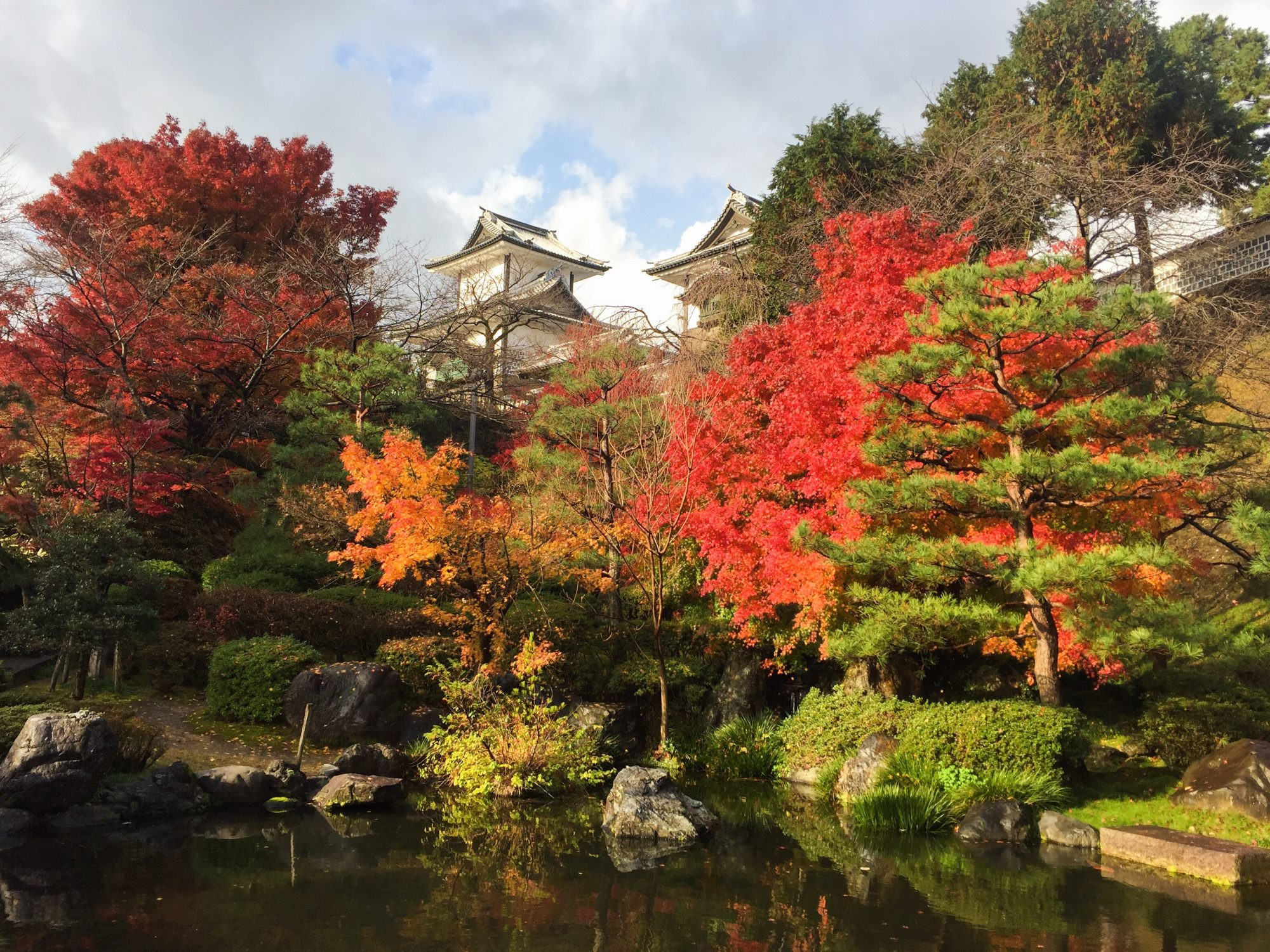 Kanazawa Castle
Kanazawa Castle
Kanazawa Castle, a beautifully reconstructed castle in Kanazawa, showcasing traditional Japanese castle architecture against a clear sky. Kanazawa is known for its well-preserved historical districts and cultural landmarks.
Kanazawa boasts a rich cultural heritage, evident in its well-preserved samurai and geisha districts, Kenrokuen Garden, considered one of Japan’s most beautiful gardens, and Kanazawa Castle. The city is also a hub for contemporary art, with world-class museums like the 21st Century Museum of Contemporary Art, Kanazawa. Kanazawa’s culinary scene is equally impressive, with fresh seafood from the Sea of Japan and exquisite Kaiseki cuisine.
Kanazawa offers a harmonious blend of history, art, and nature, making it an ideal destination for travelers seeking a more intimate and less crowded cultural experience than Kyoto. Explore its historic districts, immerse yourself in art and culture, and savor the flavors of the region.
Shirakawa-go and Takayama: Stepping into a Fairytale
Combine a visit to Kanazawa with a trip to nearby Shirakawa-go and Takayama, two destinations that offer a glimpse into Japan’s traditional rural life and stunning natural landscapes. While not entirely “off-the-beaten-path,” these destinations offer a unique charm and are well worth including in your itinerary.
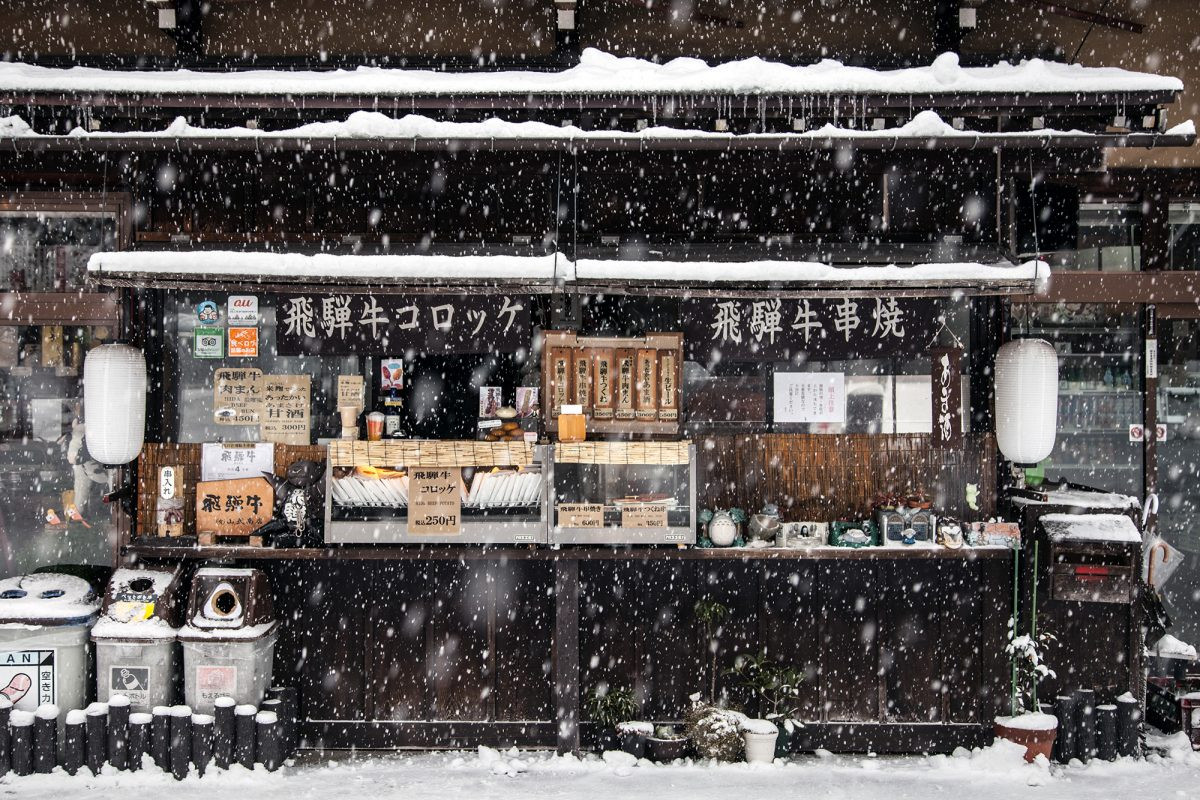 Shirakawa-go Winter Illumination
Shirakawa-go Winter Illumination
Shirakawa-go village illuminated in winter, showcasing traditional gassho-style farmhouses with snow-covered thatched roofs. This UNESCO World Heritage site is famous for its unique architecture and winter scenery.
Shirakawa-go is a picturesque mountain village nestled in the Japanese Alps, famous for its gassho-style farmhouses with steeply pitched thatched roofs designed to withstand heavy snowfall. Designated a UNESCO World Heritage site, Shirakawa-go is particularly enchanting in winter when the village is blanketed in snow, and illuminated evenings create a magical fairytale atmosphere.
Takayama, a charming town nearby, offers a well-preserved old town with traditional wooden buildings, sake breweries, and morning markets. Known for its skilled carpenters and craftsmanship, Takayama exudes a traditional Japanese atmosphere. Enjoy local specialties like Hida beef and relax in a traditional ryokan with onsen (hot springs) for a truly immersive experience.
Kumano Kodo Pilgrimage Route: Hiking Through History and Spirituality
For active travelers seeking a blend of nature and culture, the Kumano Kodo Pilgrimage Route offers an unforgettable experience. This network of ancient pilgrimage trails, designated a UNESCO World Heritage site, winds through the mountainous Kii Peninsula, connecting sacred sites and offering breathtaking scenery.
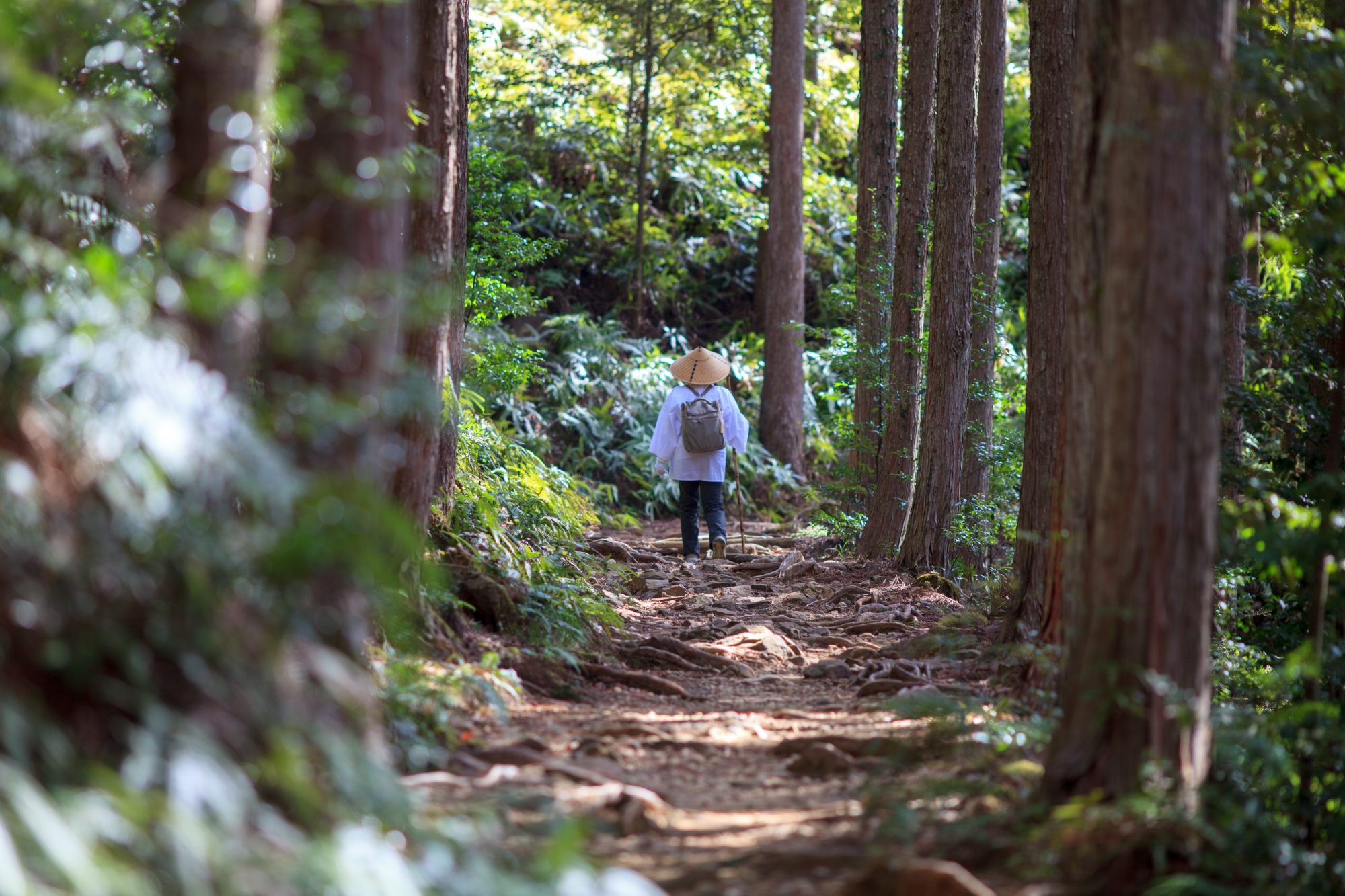 Women walking in a forest in Japan in Kumano Kodo
Women walking in a forest in Japan in Kumano Kodo
Hikers on the Kumano Kodo Pilgrimage Route, walking through a lush forest. The Kumano Kodo is a network of trails offering a blend of nature, history, and spiritual experiences.
The Nakahechi Route is the most popular section of the Kumano Kodo, accessible from Kyoto and Osaka via train to Tanabe City. This route typically takes three to four days to hike, with overnight stays in traditional guesthouses along the way. Hiking the Kumano Kodo is not only a physical journey but also a cultural and spiritual one, allowing you to connect with Japan’s ancient history and natural beauty.
Even if you don’t have time for the full Nakahechi Route, consider visiting Koyasan, a mountaintop temple complex and the spiritual center of Shingon Buddhism, also part of the Kumano Kodo network. Koyasan offers a unique experience of temple lodging (shukubo) and exploring numerous temples and sacred sites.
Iseji Route: Coastal Pilgrimage
Another route within the Kumano Kodo network, the Iseji Route, offers a different perspective, following the coastline of the Kii Peninsula. Starting in Ise City, easily accessible from Kyoto and Osaka, the Iseji Route combines coastal scenery with mountain passes and forest trails.
 Yamabushi in Iseji Route of Kumano Kodo
Yamabushi in Iseji Route of Kumano Kodo
Two images depicting Yamabushi, mountain ascetic monks, on the Iseji Route of the Kumano Kodo. These images represent the spiritual and historical aspects of the pilgrimage route, highlighting the unique cultural experiences available.
The Iseji Route is less developed and less crowded than the Nakahechi Route, offering a more off-the-beaten-path experience. It’s ideal for those seeking a more challenging hike and a chance to explore small fishing towns and coastal communities. While accommodation may be less readily available, the Iseji Route rewards adventurous travelers with its unique blend of coastal and mountain landscapes and authentic local encounters.
Beyond Tokyo: Exploring Eastern Japan
If Tokyo is your base, a different set of equally captivating destinations are within easy reach, offering escapes from the urban sprawl and showcasing the diverse beauty of eastern Japan.
Nikko: Nature and Culture in Harmony
For a quick getaway from Tokyo, Nikko is an excellent choice, offering a harmonious blend of cultural landmarks and stunning natural scenery. Easily accessible by train for a day trip or overnight stay, Nikko is a world away from the bustling city.
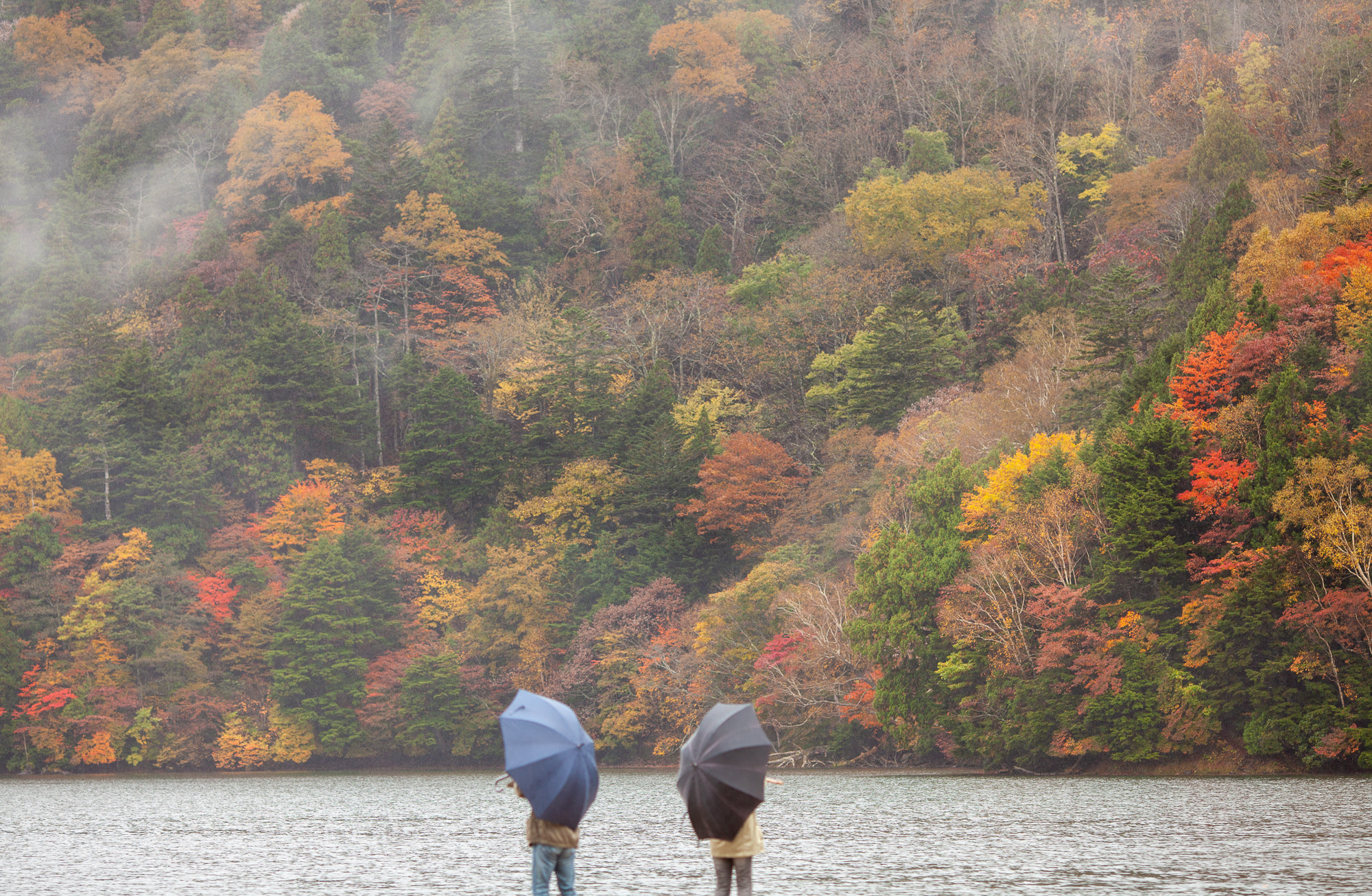 Fall in Japan, by lake Yunoko in Nikko
Fall in Japan, by lake Yunoko in Nikko
Lake Yunoko in Okunikko during autumn, showcasing vibrant fall foliage reflecting in the lake’s surface. Nikko is renowned for its autumn colors and natural beauty, easily accessible from Tokyo.
Nikko is home to Toshogu Shrine, a lavishly decorated UNESCO World Heritage site and the mausoleum of Tokugawa Ieyasu, the founder of the Tokugawa shogunate. This opulent shrine is a masterpiece of Edo-period architecture and a must-see cultural attraction.
Beyond the shrine, Nikko’s true allure lies in its natural beauty, particularly Okunikko (Inner Nikko). Lake Chuzenji, Kegon Falls, and Lake Yunoko are just a few of the scenic highlights. Okunikko offers a network of hiking trails suitable for all levels, leading through stunning landscapes, especially breathtaking during the autumn foliage season. Nikko is a perfect destination for combining cultural exploration with outdoor adventures.
Tohoku: Japan’s Undiscovered Frontier
Venture further north to Tohoku, Japan’s northeastern region, often overlooked by international tourists, but a treasure trove of natural beauty, traditional culture, and authentic Japanese experiences. Tohoku is easily accessible from Tokyo via Shinkansen, opening up a region of pristine landscapes and unique cultural traditions.
 Snowy forest with onsen in Japan
Snowy forest with onsen in Japan
Ganiba Onsen in Nyuto Onsen village, Akita, in winter, with snow-covered trees surrounding an outdoor hot spring bath. Tohoku is famous for its onsen villages and winter landscapes, offering a traditional Japanese experience.
Tohoku is renowned for its unspoiled nature, from the rugged coastlines of the Sanriku Coast to the volcanic mountains and caldera lakes of the interior. It’s also a region rich in traditional crafts, sake breweries, and onsen (hot spring) resorts. Tohoku offers a glimpse into a more traditional and rural side of Japan, where local communities are deeply rooted in their heritage.
For winter travelers, Tohoku is a wonderland of snow-covered landscapes and onsen experiences. Visit charming onsen towns like Ginzan Onsen, Nyuto Onsen, or Kuroishi Onsen, and immerse yourself in the fairytale scenery and rejuvenating hot springs. In autumn, Tohoku transforms into a spectacle of vibrant fall foliage, with destinations like Oirase Stream and Aoni Onsen offering breathtaking views. Consider utilizing the JR East Tohoku Pass for cost-effective travel throughout the region.
Fall colors viewed from a bath at Aoni Onsen, Aomori, highlighting the beauty of Tohoku’s autumn foliage. Aoni Onsen is a secluded hot spring known for its natural setting and seasonal views.
Matsumoto: Art, Castle, and Alpine Majesty
Head west from Tokyo to Matsumoto, a city nestled in the Nagano Prefecture, at the foot of the Japanese Alps. Accessible by limited express train in under three hours, Matsumoto offers a compelling combination of art, history, and access to stunning alpine scenery.

Yayoi Kusama’s “Pumpkin” sculpture on display at the Matsumoto City Museum of Art. Matsumoto is the hometown of Yayoi Kusama and offers a chance to experience her art outside of crowded city museums.
Matsumoto is the hometown of renowned contemporary artist Yayoi Kusama. The Matsumoto City Museum of Art houses a significant collection of her works, offering a chance to experience her iconic art in a less crowded setting. The city is also home to Matsumoto Castle, one of Japan’s few remaining original castles, known as “Crow Castle” for its distinctive black exterior.
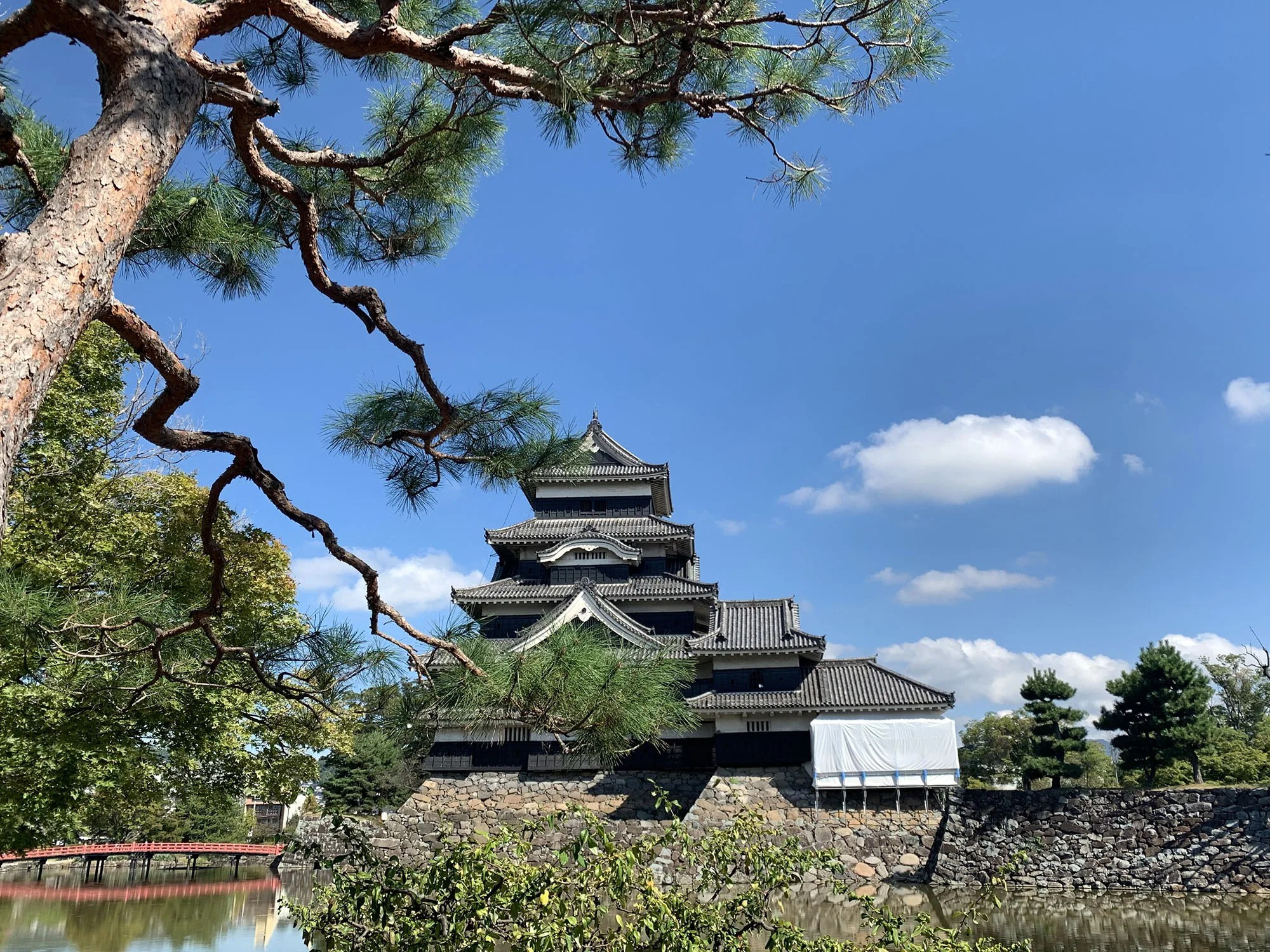 Castle in Japan as seen from outside
Castle in Japan as seen from outside
Matsumoto Castle, also known as “Crow Castle,” stands majestically against the sky. This original castle is a national treasure and a symbol of Matsumoto city.
Matsumoto serves as a gateway to the Japanese Alps, with easy access to Kamikochi, a breathtaking alpine valley renowned for its hiking trails and pristine natural beauty. Kamikochi offers trails for all levels, from leisurely strolls along the Azusa River to challenging hikes to mountain peaks. For a taste of traditional Japanese culture, visit Nagiso, a well-preserved town along the ancient Nakasendo postal route, offering a glimpse into Edo-period Japan.
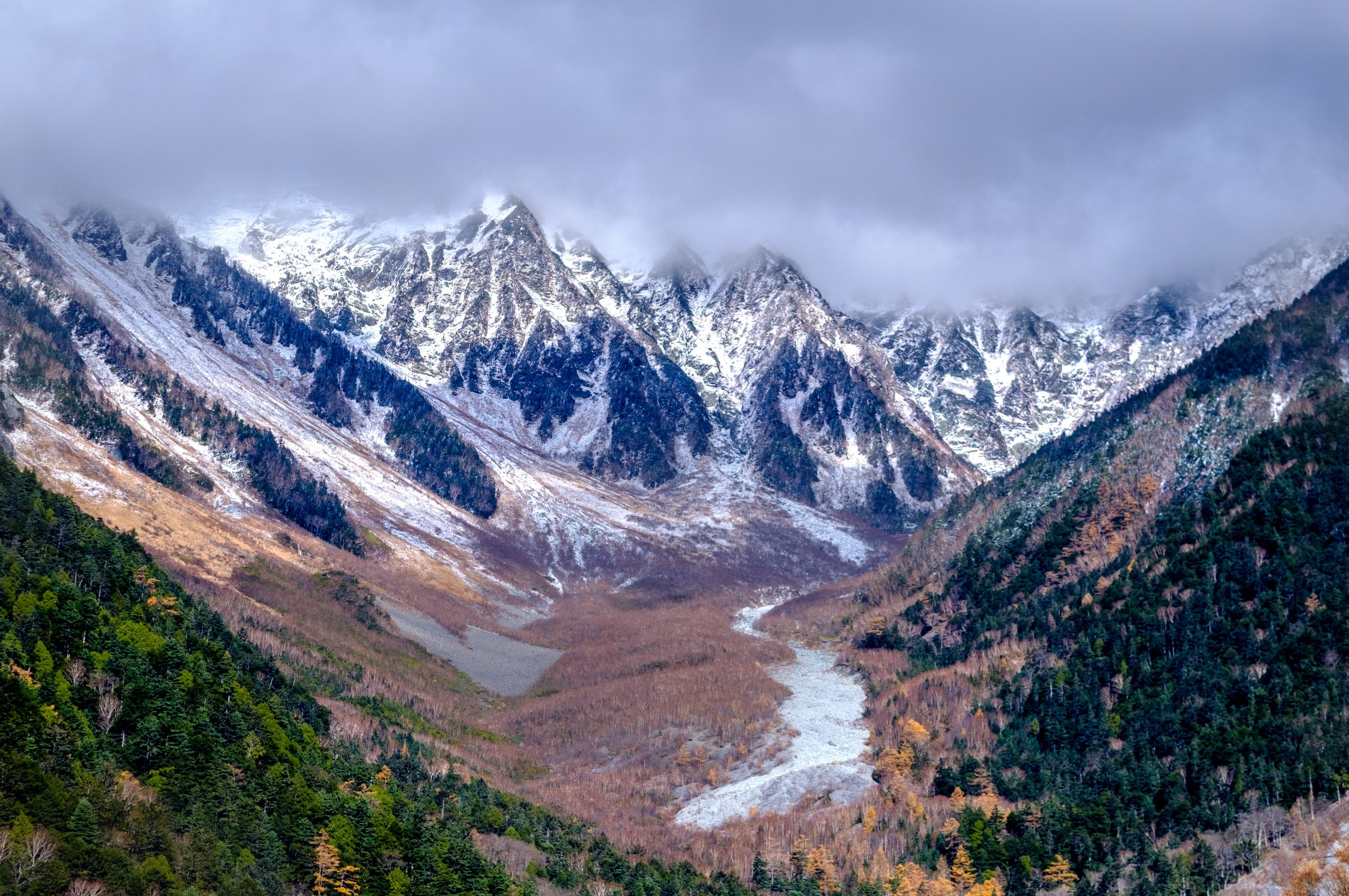 Kamikochi Nagano
Kamikochi Nagano
Kamikochi in Nagano Prefecture, a stunning alpine hiking destination in the Japanese Alps, with clear rivers and mountain views. Kamikochi is a popular spot for nature lovers and hikers.
Sadogashima Island: History and Nature Off the Beaten Path
For a truly unique and off-the-beaten-path island experience, consider Sadogashima Island, located off the coast of Niigata. Accessible from Tokyo in about three hours via Shinkansen and ferry, Sadogashima offers a captivating blend of history, nature, and island culture.
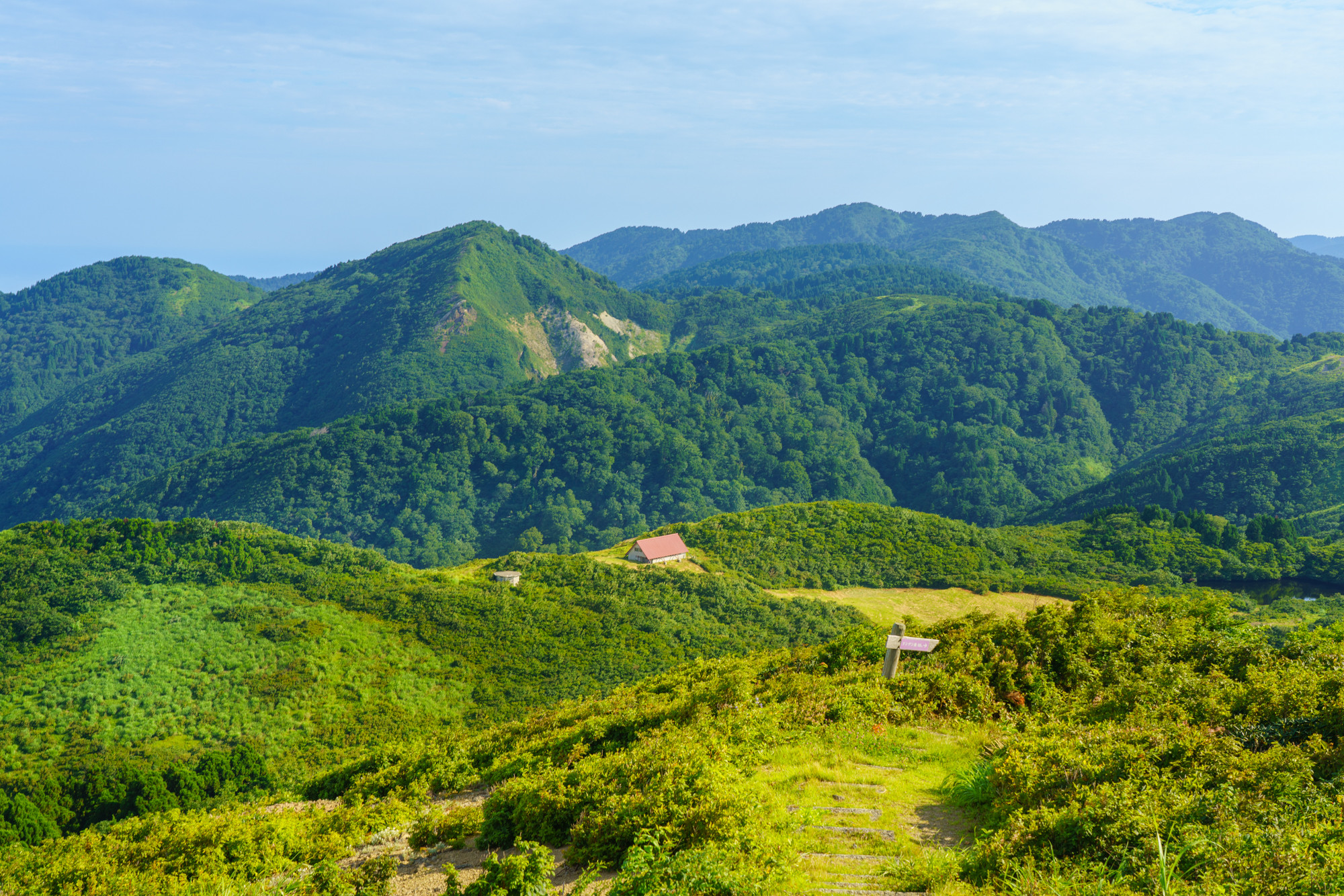 Emergency hut in mountanous area in Sadagoashima
Emergency hut in mountanous area in Sadagoashima
A mountain trail on Sadogashima Island, showcasing the island’s rugged terrain and natural beauty. Sadogashima offers a unique island experience with hiking, historical sites, and local culture.
Sadogashima Island boasts a rich history, including its former gold mines, recently designated a UNESCO World Heritage site. Explore the island’s historical sites, hike its mountainous interior with ocean views, and experience the unique local culture. Sadogashima offers a more remote and less touristy island experience compared to some of Japan’s more popular islands, making it ideal for adventurous travelers seeking something different.
Expanding Your Japan Journey
This guide offers just a glimpse into the wealth of incredible destinations that await beyond Tokyo and Kyoto. Japan is a country of endless discovery, and venturing beyond the typical tourist routes opens up a world of unique experiences and unforgettable memories.
Consider exploring Japan’s smaller islands for a taste of rural island life, or delve deeper into the country’s numerous hiking trails and pilgrimage routes. For winter adventures, Hokkaido offers pristine snowscapes and unique winter festivals, while autumn brings breathtaking foliage across the country. No matter your interests, Japan has something to offer every traveler, and the best places to travel are often those that lie just beyond the well-trodden path.


